Navigating the fast-fashion industry is akin to charting a course through a tempestuous sea, where the currents of politics, economics, society, technology, ecology, and law converge to create a landscape of unparalleled complexity and volatility.
In this ever-shifting environment, companies like Primark find themselves constantly buffeted by the winds of change, facing challenges and opportunities that emerge with little warning.
The dynamics of this market are characterized by their unpredictability, demanding nimble adaptation and strategic foresight to stay afloat amidst turbulent waters.
Amidst such turbulence, the PESTEL model emerges as a beacon of clarity, offering a systematic framework for dissecting and comprehending the multifaceted forces shaping Primark’s operating environment.
In this analysis, we delve into the myriad challenges and opportunities that Primark encounters in each dimension of the PESTEL framework, unraveling the intricacies of its operating environment and uncovering strategic imperatives to thrive amidst uncertainty.
Primark overview
Primark, a renowned clothing retailer, has carved its niche with affordable fashion and homeware. Let’s delve into its essential aspects:
Founded in 1968 by Arthur Ryan in Dublin, Ireland, it was initially named Penneys; it later rebranded as Primark in 1971 to sidestep trademark issues in the United States.
Primark is synonymous with retailing clothing, homeware, and beauty products at budget-friendly prices. Primark faces competition from H&M, Zara, Forever 21, New Look, and Mango.

The company primarily sources its products from Asia, particularly Bangladesh, China, and Vietnam. Primark targets value-conscious consumers, predominantly young adults and families seeking affordable yet trendy fashion choices.
To maintain affordability, Primark prioritizes low-cost production and efficient supply chains. It keeps customers engaged by frequently introducing new products and minimizes marketing expenditure, relying on word-of-mouth promotion.
As of 2023, Primark has approximately 398 stores in 14 countries, and sales reached €8.2 billion in 2022.
Political environment
The international political landscape presents opportunities and challenges for Primark in the fast-fashion market. Here’s a breakdown of some key areas:
Opportunities:
Trade Agreements:
Existing trade agreements, like those enjoyed by Primark within the European Union, can facilitate smoother import/export of raw materials and finished products, reducing costs and increasing efficiency.
For instance, the European Union has trade agreements with other regions, allowing for duty-free access or reduced tariffs on certain goods. This benefits Primark’s import/export activities within the EU.
Government Subsidies:
In some countries, governments might offer subsidies to support domestic textile industries. This could potentially benefit Primark if it sets up manufacturing facilities in those regions.
Threats:
The war in Ukraine
The war in Ukraine has a negative impact on Primark’s performance in a couple of ways:
Increased Costs:
While Primark doesn’t directly source materials from Ukraine or Russia, the war has caused a surge in global energy and commodity prices. This puts pressure on Primark’s profit margins, as it becomes more expensive to produce and transport their clothing lines.
Potential Price Increases:
To offset rising costs, Primark’s parent company, Associated British Foods, has announced plans for “selective price increases” on some of its autumn/winter stock. However, there’s a concern that these price increases, even if minor, could deter budget-conscious customers, impacting sales volume.
Primark is known for its focus on affordability, so navigating this situation will be challenging. To stay competitive, they’ll need to balance rising costs with maintaining their value proposition.
Trade Wars:
Political tensions and trade wars between countries can disrupt Primark’s supply chain, leading to tariffs that inflate consumer prices. The recent trade disputes between the US and China impacted many fashion brands, including Primark.
In fact, Primark has been expanding in the US since opening its first store in Boston in 2015. As of recently (closing 2023), they have at least 24 stores across 8 states.
They have plans to continue expanding and reach over 60 locations by 2026. In 2018, the US imposed tariffs on Chinese goods, impacting clothing imports and increasing prices for American consumers. If trade tensions escalate, this could be a potential future scenario for Primark in other markets.
Protectionism:
Rising nationalistic sentiments can lead to stricter import regulations or quotas, making it harder for Primark to access certain markets or source materials easily.
Sustainability Regulations:
Governments worldwide are increasingly implementing stricter regulations on environmental practices. This can force Primark to adapt its manufacturing processes and potentially increase production costs to comply.
Overall, Primark needs to navigate the complexities of the political environment. By staying informed about trade policies, potential regulations, and consumer sentiment, Primark can identify opportunities to expand its reach while mitigating potential risks.
Economic environment
Primark faces a dynamic international economic landscape, presenting challenges and opportunities for its global expansion endeavors.
Inflationary pressures are elevating costs across raw materials, transportation, and labor, constraining Primark’s profit margins amidst a projected global inflation rate of 4.7% in 2023.
To address this, Primark may consider price adjustments for consumers or streamlining production processes for cost efficiency.
Currency fluctuations further complicate matters, potentially inflating expenses for Primark in importing materials or exporting finished products, especially with a stronger US dollar impacting sourcing from regions with weaker currencies.
Primark could counter these effects by diversifying sourcing locations or adopting currency hedging strategies. Conversely, according to the IMF, a robust global economy, forecasted to grow by 3.6% in 2023, presents an avenue for Primark to leverage increased consumer spending, particularly in emerging markets, for expanding its customer base.
Social environment
Primark operates within a fast-paced social and cultural sphere, where trends shape consumer behavior and expectations. Several key dynamics impact the fast-fashion industry, influencing Primark’s strategies:
Firstly, rising environmental concerns prompt Primark to adopt sustainable practices, evidenced by their eco-conscious collections and investments in recycling technologies.
Secondly, ethical consumerism necessitates Primark’s commitment to fair labor practices, addressing consumer demands for transparency and accountability.
The shift towards second-hand clothing and focus on quality and longevity challenge Primark to innovate through integration with resale markets and offering higher-quality, timeless pieces.
Finally, the “See Now, Buy Now” mentality, fueled by social media, plays to Primark’s strengths of rapid response to trends, positioning them favorably amidst changing consumer preferences.
Navigating these trends presents both challenges and opportunities for Primark. Embracing sustainability, ethical sourcing, and quality can enhance consumer trust, while maintaining agility in responding to social media influences remains pivotal for sustained relevance and growth.
Technological environment
The technological environment rapidly evolves and presents opportunities and challenges for fast-fashion companies like Primark. Here are some key aspects that can significantly impact their growth and performance:
Opportunities:
Data Analytics and Customer Insights:
By leveraging customer purchase data, browsing behavior, and social media trends, Primark can gain valuable insights into customer preferences and buying patterns.
For example, Primark can use data analytics to predict the most popular styles and optimize production accordingly, reducing the risk of excess inventory and wasted resources.
Advanced Manufacturing Techniques:
Technologies like 3D printing and digital garment construction can streamline the design and production, allowing faster turnaround times and more customization options.
For instance, Primark could use 3D printing for prototyping or creating limited-edition, personalized clothing items.
Automation and Robotics:
Automating repetitive tasks in production can improve efficiency, potentially reduce costs, and enhance product quality. Primark could invest in robotic systems for fabric cutting or garment assembly to increase production speed and consistency.
Omnichannel Retailing:
Integrating online and offline shopping experiences allows customers to seamlessly browse, purchase, and return items through various channels (website, app, stores).
Thus, Primark can offer click-and-collect options or in-store kiosks for online order returns, creating a more convenient shopping experience.
Artificial Intelligence (AI):
AI can personalize product recommendations, optimize pricing strategies, and improve chatbots for customer service, enhancing online engagement and sales.
Primark could use AI-powered chatbots to answer customer questions about sizing, product availability, or styling tips, providing a 24/7 support system.
Threats:
Cybersecurity Threats:
Data breaches and cyberattacks can compromise customer information and damage brand reputation. A data breach could expose customer credit card details or personal information, leading to financial losses and a loss of consumer trust.
Rapid Technological Change:
Keeping pace with ever-evolving technologies requires continuous investment and adaptation to maintain a competitive edge.
For example, Primark needs to adopt new technologies for design, production, or online shopping experiences to compete with fast-moving competitors.
Ethical Concerns of AI and Automation:
Over-reliance on AI and automation could lead to job losses in the garment industry, raising ethical concerns for brands. Primark needs to balance using technology for efficiency and ensuring fair treatment of its workforce.
Overall, technology plays a vital role in the fast-fashion industry. By embracing innovation and strategically implementing technological solutions, Primark can optimize its operations, personalize customer experiences, and drive growth and performance.
Ecological environment
The ecological impact of fast fashion remains a pressing concern, with various factors poised to continue exerting pressure on the industry, including giants like Primark, in the years ahead.
One significant issue revolves around water scarcity and pollution. Fast fashion’s extensive water consumption, particularly in processes like cotton cultivation and dyeing, coupled with the discharge of chemicals into waterways, poses environmental threats.
A notable example is the Aral Sea, once a vast freshwater lake, which is now significantly diminished due to excessive water usage for cotton production in the region.
As water scarcity intensifies globally, regulations on water usage in the fashion sector may tighten, impacting production costs and prompting innovations in water-efficient practices.
Microplastic pollution emerges as another critical concern. Synthetic clothing releases microplastics during washing, contaminating water bodies and ecosystems.
Recent research from Stanford University highlights the substantial contribution of fast fashion to this pollution, with washing synthetic clothes releasing millions of microfibers per wash.
This could lead to governmental regulations or bans on synthetic microfibers, urging fast-fashion brands to adopt more sustainable materials such as organic cotton or recycled textiles.
Additionally, the fast-fashion model exacerbates textile waste and landfill issues. Frequent clothing purchases result in vast amounts of textile waste, with Ellen MacArthur Foundation statistics indicating a truckload of textiles being landfilled or incinerated every second globally.
Initiatives like take-back programs and clothing repair services gain traction as consumers become more conscious of textile waste, pushing brands like Primark to adopt such measures and explore textile recycling technologies to minimize waste.
Furthermore, climate change concerns loom large, with the fast-fashion industry significantly contributing to greenhouse gas emissions and wastewater. Stricter regulations on carbon emissions could compel fast-fashion brands to shift towards renewable energy sources for manufacturing, potentially impacting costs.
In conclusion, the ecological footprint of fast fashion faces increasing scrutiny, necessitating adaptation to stricter regulations, evolving consumer preferences, and technological innovations.
Legal environment
The legal environment holds opportunities and threats for the fast-fashion industry, including Primark. Here’s a breakdown of some key legal factors to consider:
Increasing Focus on Labor Practices:
Consumers demand greater transparency in supply chains and pressure on brands to ensure fair wages, safe working conditions, and adherence to labor laws.
For instance, the European Union proposed, in 2023, a new directive on “Corporate Sustainability Due Diligence,” requiring companies to identify and mitigate environmental and human rights risks in their supply chains.
This could significantly impact how fast-fashion brands like Primark source their materials and garments.
Fashion brands could expect stricter regulations and increased scrutiny of labor practices in the fast-fashion industry. Thus, they must demonstrate responsible sourcing and ethical treatment of workers to avoid legal repercussions and maintain consumer trust.
Environmental Regulations and Sustainability Standards:
Governments are moving towards stricter environmental regulations for the fashion industry, focusing on issues like water usage, chemical use, and waste disposal.
A 2023 study by McKinsey & Company found that 60% of apparel companies globally have set sustainability targets, reflecting the growing pressure to comply with stricter regulations.
In the next years, we should expect more regulations mandating recycled materials, restrictions on harmful chemicals, and improved wastewater treatment practices.
Brands like Primark must adapt their production processes and source materials that meet these evolving standards.
Intellectual Property Issues:
Copyright and trademark infringement can be issues in the fast-fashion industry, with accusations of copying designs from independent or luxury brands.
In 2024, a small independent designer in New York sued a fast-fashion retailer for allegedly copying a unique dress design. This case highlights the ongoing legal battles surrounding intellectual property in the fashion world.
So, brands like Primark will need robust safeguards to ensure their designs are original and avoid infringing on the intellectual property of others.
Consumer Protection Laws and Product Safety:
Product safety and labeling regulations are crucial to protect consumers from harmful chemicals or misleading descriptions.
A 2023 report by the International Consumer Protection Organisation (ICPO) found that clothing safety issues were among the top consumer complaints globally.
Thus, Primark must prioritize product testing and transparent labeling practices to comply with these regulations.
The legal environment is pushing the fast-fashion industry towards more responsible practices. Primark and similar companies will need to adapt to comply with evolving legal frameworks on labor rights, environmental sustainability, intellectual property, and consumer protection.
Building transparency and ethical practices into their operations will be key for navigating this complex legal landscape.
Conclusion
In conclusion, Primark operates within a fast-paced and complex macro environment shaped by political, economic, social, technological, ecological, and legal factors.
While the analysis reveals both opportunities and threats, strategic prescriptions can guide Primark toward success in navigating this dynamic landscape.
Primark should leverage existing trade agreements and government subsidies to seize opportunities to optimize its import/export activities and manufacturing processes. Additionally, the company can capitalize on a robust global economy by expanding its reach in emerging markets.
Embracing sustainability, ethical sourcing, and quality products can enhance consumer trust and loyalty, while rapid response to social media trends ensures continued relevance.
However, to counter threats, Primark must proactively address supply chain disruptions, inflationary pressures, and shifting consumer preferences towards sustainable and ethical practices.
Diversifying sourcing locations, adopting currency hedging strategies, and investing in technology for efficiency and customization can mitigate risks associated with economic uncertainties and technological advancements.
Moreover, compliance with evolving legal frameworks, including labor rights, environmental standards, and intellectual property regulations, is essential to maintain brand integrity and avoid legal repercussions.
By implementing these strategic prescriptions, Primark can position itself for sustained growth and competitiveness in the fast-fashion industry, effectively seizing opportunities while effectively countering threats in the macro environment.
PESTEL analysis examples 2024
To better understand the PESTEL analysis, we invite you to read our recent free examples of the Pestel framework.
PESTEL analysis of Zara
Click here to read our example of Zara’s PESTEL analysis.
PESTEL analysis of DHL
Click here to read our example of DHL’s PESTEL analysis.
PESTEL analysis of FedEx
Click here to read our example of FedEx’s PESTEL analysis.
PESTEL analysis of Chipotle
Click here to read our example of Chipotle’s PESTEL analysis.
PESTEL analysis of Brazil
Click here to read our example of Pestel’s analysis of Brazil.
PESTEL analysis of Spotify
Click here to read our example of Spotify Pestel analysis.
Chick-fil-A PESTEL Analysis
Click here to read our example of Chick-fil-A Pestel analysis.
Costco PESTEL Analysis
Click here to read our example of Costco Pestel analysis.
Microsoft PESTEL Analysis
Click here to read our example of Microsoft Pestel analysis.
Disney PESTEL Analysis
Click here to read our example of Disney Pestel analysis.
Airline Industry PESTEL Analysis
Click here to read our example of the Airline industry Pestel analysis.
Walmart Pestel Analysis
Click here to read our example of Walmart Pestel analysis.
Amazon Pestel Analysis
Click here to read our example of Amazon Pestel analysis.
McDonald’s Pestel Analysis
Click here to read our example of the Netflix Pestel analysis.
Netflix Pestel Analysis
Click here to read our example of the Netflix Pestel analysis.
Apple Pestel Analysis
Click here to read our example of the Apple Pestel analysis.
Twitter Pestel Analysis
Click here to read our example of the Twitter Pestel analysis.
Facebook Pestel Analysis
Click here to read our example of the Facebook Pestel analysis.
Pestel analysis of the Social Media industry
Click here to read our example of the Pestel analysis of the Social Media industry.
Ikea Pestel Analysis
Click here to read our example of the IKEA Pestel analysis.
Tesla Pestel Analysis
Click here to read our example of the TESLA Pestel analysis.


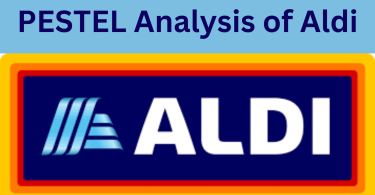
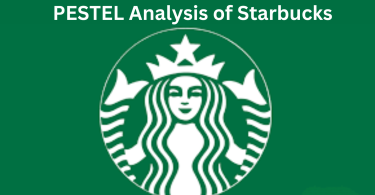

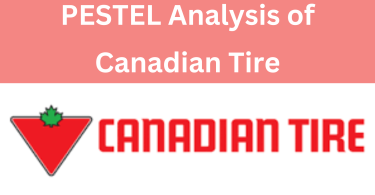


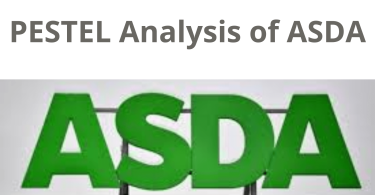

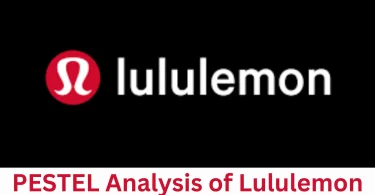

Leave a Comment